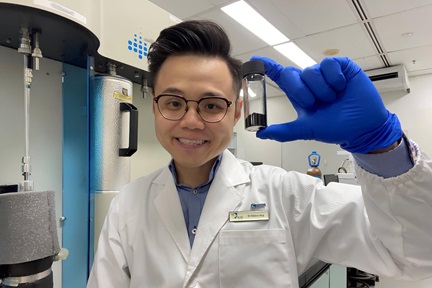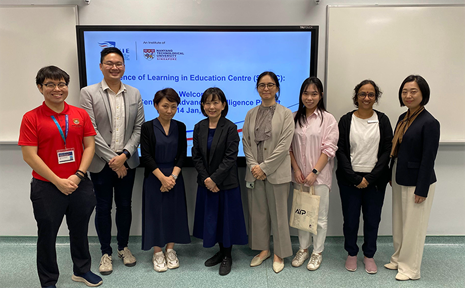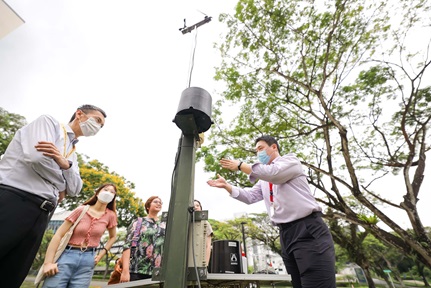Electrochemical Innovation: Paving the Way for Sustainable Ammonia Production
Dr. Edison Ang, a prominent researcher in the field of sustainable energy and chemical production, has been recognized for his exceptional work in the Early-Career Researchers section of the Proceedings of the National Academy of Sciences (PNAS) in 2023. His team’s research offers a groundbreaking solution to a pressing global challenge – the environmentally friendly production of ammonia, a crucial industrial and agricultural chemical.
The Significance of Electrocatalytic Nitrogen Reduction
The process of electrocatalytic nitrogen reduction holds immense importance in the quest for sustainable ammonia production. It involves converting nitrogen gas (N2) into ammonia (NH3), a process central to the production of fertilizers, which are vital for global agriculture. However, this process is inherently challenging, requiring optimization to achieve high ammonia yield rates and rational faradaic efficiency.
The faradaic efficiency refers to the ratio of electrons used to produce ammonia to the total electrons involved in the reaction. Improving this efficiency is essential for sustainable ammonia production as it minimizes energy wastage during the electrochemical process.
Dr. Ang’s research emphasizes the critical need to enhance electrocatalytic nitrogen reduction. By optimizing oxygen vacancies through grain boundary engineering, the team is striving to improve the performance of catalysts and make this process more efficient and sustainable.
Feasibility and Practical Applications
One of the key outcomes of this research is the feasibility of enhancing electrocatalytic nitrogen reduction through grain boundary engineering. This involves manipulating the grain boundaries in catalysts to promote oxygen vacancies, which significantly influence the catalytic performance in nitrogen reduction.
Grain boundary engineering involves altering the structure and composition of catalysts at the atomic level, improving their efficiency and reactivity. This approach represents a promising avenue for increasing the yield rate and faradaic efficiency of ammonia production, ultimately contributing to a more sustainable future.
The potential applications of this research are vast and impactful. Efficient and sustainable ammonia production is essential for global food security and environmental sustainability. Ammonia is a critical component of fertilizers, playing a pivotal role in enhancing crop yields and, consequently, food production.
Ammonia has a rising significance in the energy sector. It can be used as a clean fuel, enabling a transition towards renewable energy sources. Sustainable ammonia production aligns with the world’s efforts to reduce greenhouse gas emissions and combat climate change.
Advancing Ammonia Production: Optimizing Oxygen Vacancies
The research conducted by Dr. Ang’s team is a remarkable step towards transforming ammonia production into a more efficient and sustainable process. The focus on optimizing oxygen vacancies through grain boundary engineering represents a novel approach in catalysis.
The specific catalyst, MoO2/C700, developed by the team, has demonstrated superior performance compared to existing solutions. This breakthrough brings us closer to achieving a high yield rate and rational faradaic efficiency in electrocatalytic nitrogen reduction, critical for sustainable ammonia production.
The Clinical Importance of This Research
Understanding and supporting research of this nature is crucial for several reasons. First and foremost, it addresses a pressing global challenge by providing a more sustainable approach to ammonia production. Ammonia is an indispensable chemical in various industries, and finding ways to produce it efficiently and sustainably has far-reaching implications for our society.
By promoting innovative catalyst development and optimization techniques, this research can revolutionize the electrocatalytic nitrogen reduction process. The resulting catalyst, MoO2/C700, presents a promising avenue for more efficient and sustainable ammonia production.
Staying informed about these advancements is essential for individuals and professionals in diverse fields. It allows us to contribute to the adoption of greener technologies and to collectively work towards a cleaner, more sustainable future.
Dr. Edison Ang’s research represents a beacon of hope in the quest for sustainable ammonia production. Through the optimization of oxygen vacancies via grain boundary engineering, the team has showcased a promising avenue to enhance electrocatalytic nitrogen reduction and, consequently, ammonia production.
While we celebrate these promising findings, it’s essential to exercise caution and avoid overstatements regarding immediate practical applications. Further research and rigorous testing are imperative before the widespread adoption of this technology can be considered.
The potential impact of this research on ammonia production, agriculture, energy, and the environment is profound. Supporting and promoting such research endeavors is essential for fostering a greener and more sustainable future for all. Dr. Ang’s dedication and innovative approach embody the spirit of progress towards a more sustainable world.
Read the original article here.
Copyright © 2024 New York Business Post


.tmb-listing.jpg?Culture=en&sfvrsn=a2d9f5f9_1)


